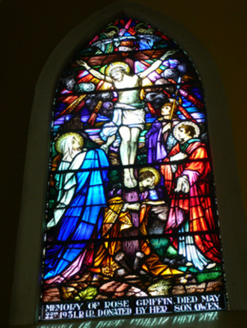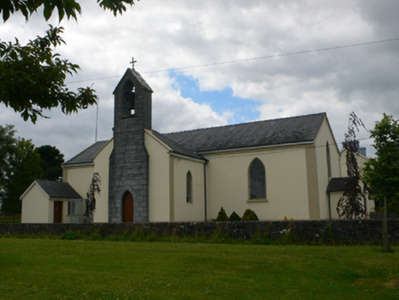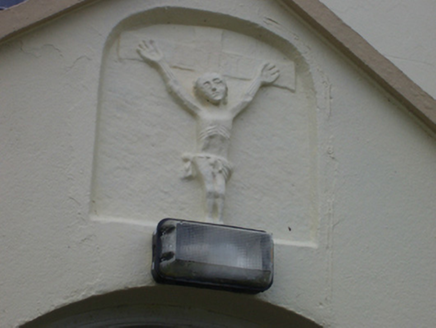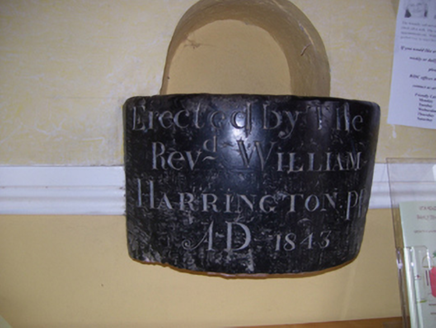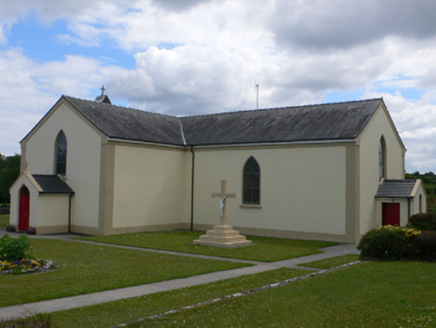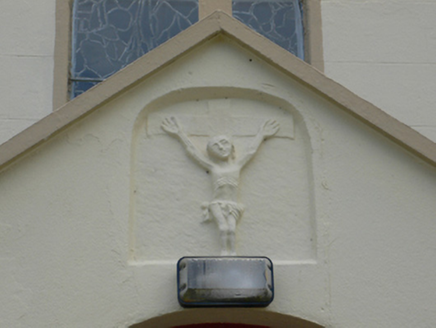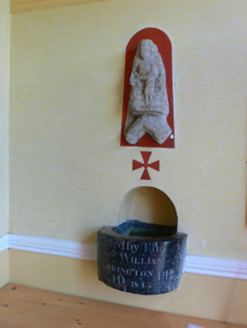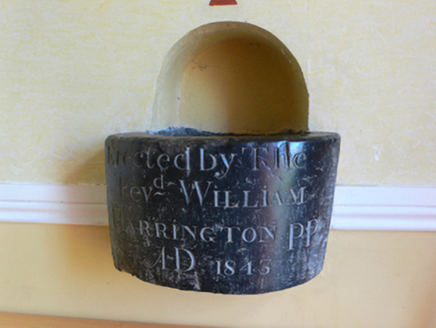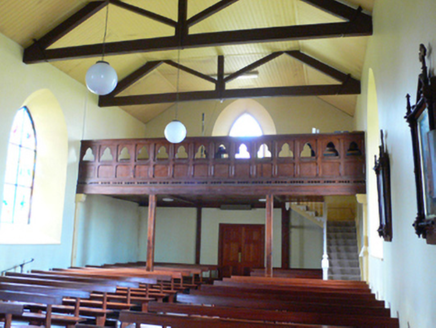Survey Data
Reg No
30400702
Rating
Regional
Categories of Special Interest
Archaeological, Architectural, Artistic, Social
Original Use
Church/chapel
In Use As
Church/chapel
Date
1840 - 1890
Coordinates
170771, 267216
Date Recorded
10/10/2009
Date Updated
--/--/--
Description
Freestanding T-plan Catholic church, dated 1843, having later lower gable-fronted chancel addition to east with integral late nineteenth-century limestone-built belfry, gabled porch projections to other gables, and recent gabled extension to south-east corner. Pitched artificial slate roof with render eaves course, render copings to east projection and render barges elsewhere. Belfry projects slightly from face of porch projection and has pointed arch bell opening with bell and stone flag coping topped by metal cross finial. Rendered walls with render plinth and with reticulated render detail at quoins. Rusticated stone walls to belfry, with dressed quoins. Carved limestone slab over north porch has rustic crucifixion with 'INRI' to cross, within elliptical arched recess. Same porch has holy water stoup with inscription 'Erected by Revd William Harrington PP AD 1843' and above is medieval carving of Virgin and Child. Pointed arch stained-glass windows having render sills, pointed arch doorway to chancel and round-headed doorways to porches with timber battened doors having plain overlights. Interior has pointed arch recess to altar area with crucifixion, ceiling has light kingpost timber trusses, carved timber frames to Stations of the Cross, and carved timber gallery supported on timber posts. Church set within lawned grounds bounded by rendered walls, with some graves and statue of Blessed Virgin Mary atop carved limestone pedestal, and crucifixion atop stepped plinth.
Appraisal
This late barn church retains much of its architectural history in its fabric and displays interesting religious artifacts such as the carved crucifixion, Virgin and Child, and a fine limestone stoup. It has varied stained-glass windows, and these and the Stations of the Cross add colour and interest to the rather plain interior. It is a very good example of a type that was largely superseded by larger and more capacious churches in the late nineteenth and twentieth centuries.
